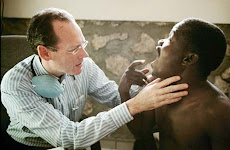Lab #10 Outline - this lab will be due Thursday April 9th!
Lab outline HERE
AP Lab #10: The Effect of Temperature on Fish Respiration Rate
Introduction:
Paragraph #1: Discuss ectothermic animals. What does ectothermic mean? What is the relationship between environmental activity and metabolism in ectothermic organisms?
Discuss purpose of the lab – indirectly measure respiratory rate of gold fish by measuring breathing rate
Paragraph #2: Discuss the physiology of a fish which regard to respiratory system. How does a fish breath?
Paragraph #3: Summarize the procedure for this lab and state your hypothesis for the lab here.
Paragraph #4: Relate this lab to one of the major themes of this course:
* 1. Science as a Process of Inquiry
* 2. Evolution
* 3. Energy Transfer
* 4. Continuity & Change
* 5. Relationship of Structure to Function
* 6. Regulation
* 7. Interdependence in Nature
* 8. Science, Technology & Society
Procedure:
In paragraph form summarize steps 1-8 of the procedure
Results:
One to two sentence summary of the results.
Table 1: Temperature and Respiratory Rate
Reading Temperature Respiratory Rate Q10
Rate high Temp
Rate lower Temp
1 X
2
3
4
5
Graph: Number of Mouth Openings vs. Temperature
Number of Mouth Openings is on the y axis
Temperature is on the x axis
Draw the best fit line through the data.
Conclusion
Paragraph 1: Restate purpose, procedure, and hypothesis.
Paragraph 2: Discuss results. Does the data support your hypothesis. Use evidence to support this. Refer to the graph.
Paragraph 3: How did your results differ from what the results of an endothermic organisms might look like? Does the behavior of the gold fish help the gold fish to regulate its temperature? Fish use 15% of their energy in ventilation compared to 2% in endothermic organisms – explain this huge difference.
Paragraph 4: Discuss any error that may have occurred in the lab. Discuss ways you can improve the lab.
Paragraph 5: Why is this lab significant? How does this lab relate to the big themes of AP biology and why is this
Subscribe to:
Post Comments (Atom)




No comments:
Post a Comment